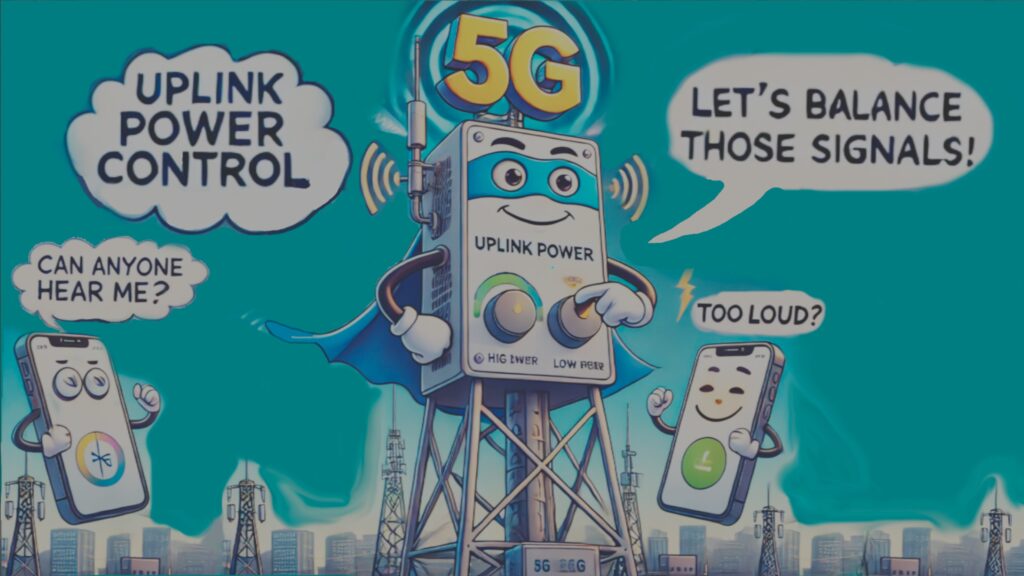
Imagine your phone is trying to “shout” to the 5G tower while also saving battery and avoiding interference to other phones. This balancing act is managed by Uplink Power Control. In both 5G and 4G, uplink power control adjusts your phone’s transmit power so that the base station receives signals at just the right strength.
Watch the full video below to see these concepts in action:
What is Uplink Power Control?
Uplink Power Control is the process of dynamically adjusting your phone’s transmit power when sending signals to the tower (base station). Think of it like adjusting your voice in a conversation—if you’re close, you speak softly; if you’re far away or in a noisy room, you speak louder.
The goal is to ensure that every phone’s signal arrives at the tower with similar strength, measured as Power Spectral Density (PSD), which is the power per unit frequency. This uniformity makes it easier for the base station to decode signals accurately and ensures fairness—no single user’s signal overwhelms the others.
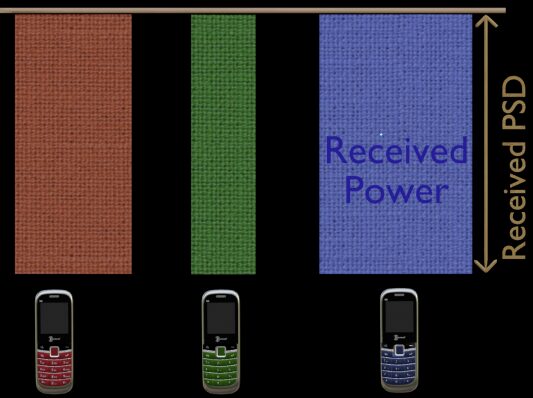
The Basic Power Calculation
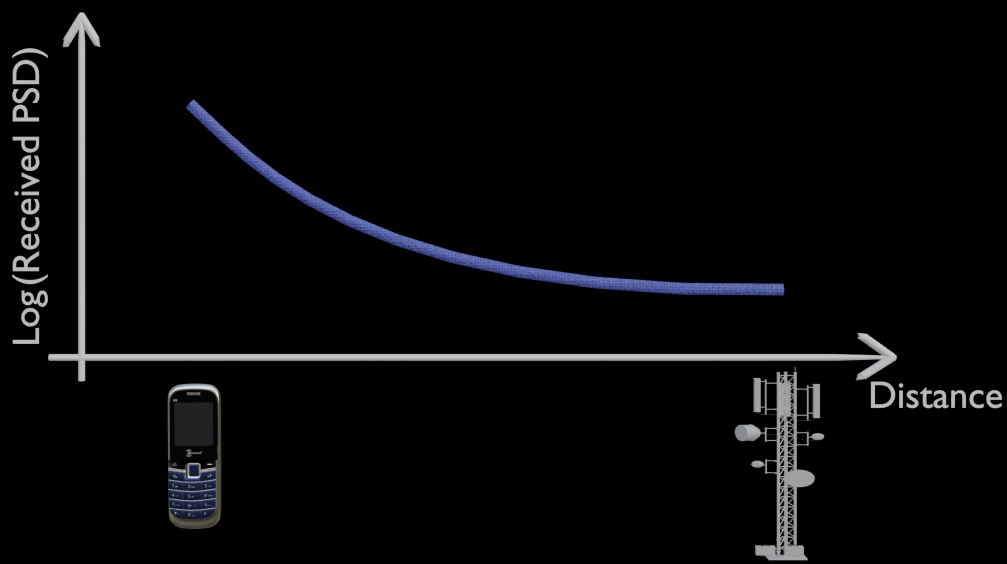
Wireless signals weaken as they travel due to pathloss. To compensate, your phone calculates its transmit power using a simple formula (in logarithmic domain):
Transmit Power = P₀ + Pathloss
- P₀ is the target PSD provided by the base station.
- Pathloss is estimated by your phone from pilot signals sent by the base station.
In other words, your phone transmits at a power level that is the sum of the target power plus additional power to overcome the pathloss, as illustrated below.
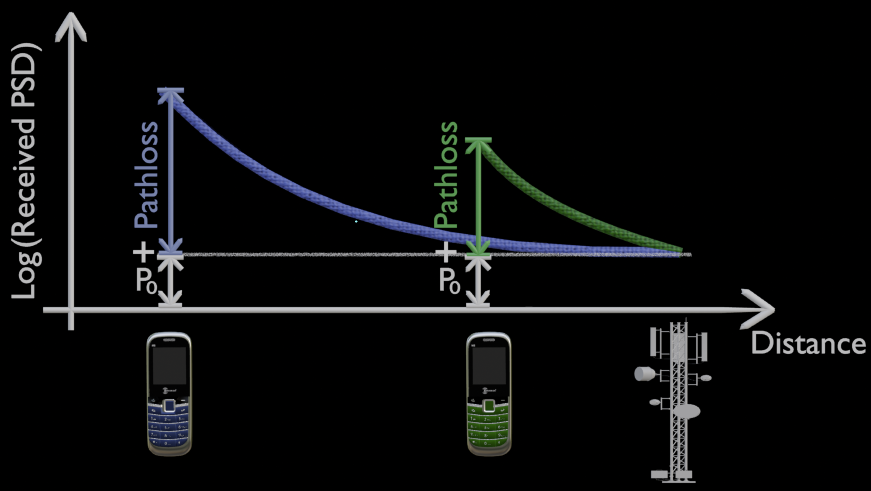
Making it Smarter: Addressing Real-World Challenges
The basic formula is a good start, but real-world networks are more complex. Let’s look at how 5G systems refine this process.
1. Saving Power and Reducing Interference
(Partial Pathloss Compensation)
Problem:
Distant phones must boost their power to overcome pathloss. However, transmitting at full power drains batteries and creates interference to neighbouring cells.
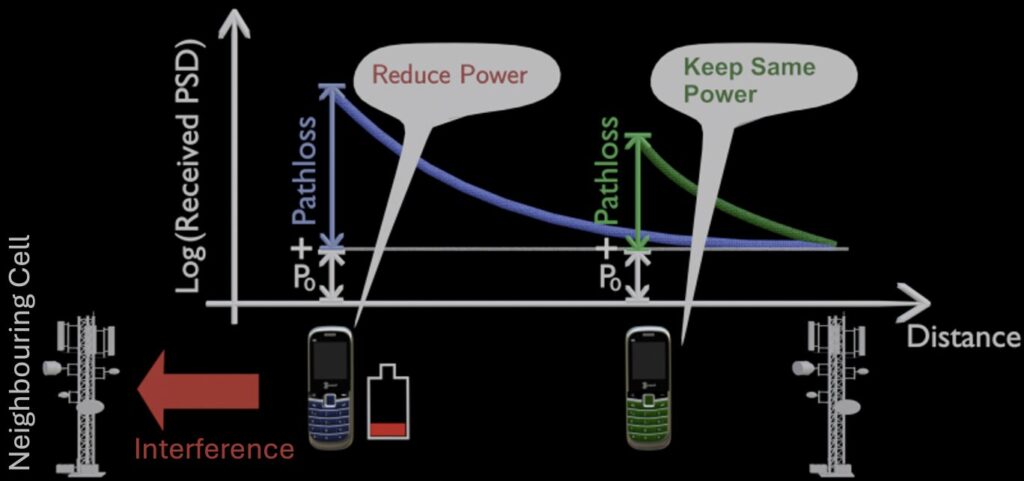
Solution:
Instead of fully compensating for pathloss, phones use Partial Pathloss Compensation. The base station sends a parameter called alpha (a value ≤ 1). Now, the transmit power is calculated as:
Transmit Power = P₀ + (alpha × Pathloss)
A smaller alpha means less compensation, which saves battery for faraway phones, as illustrated below:

2. Dealing with Interference from Other Cells
(Closed-Loop Power Control)
Problem:
Interference from neighbouring 5G cells can disrupt communication, even if received PSD is correct.
Solution:
The base station sends Transmit Power Control (TPC) commands that instruct phones to adjust their power up or down based on current interference levels. This dynamic adjustment is called Closed Loop Power Control. It helps maintain signal clarity despite interference.
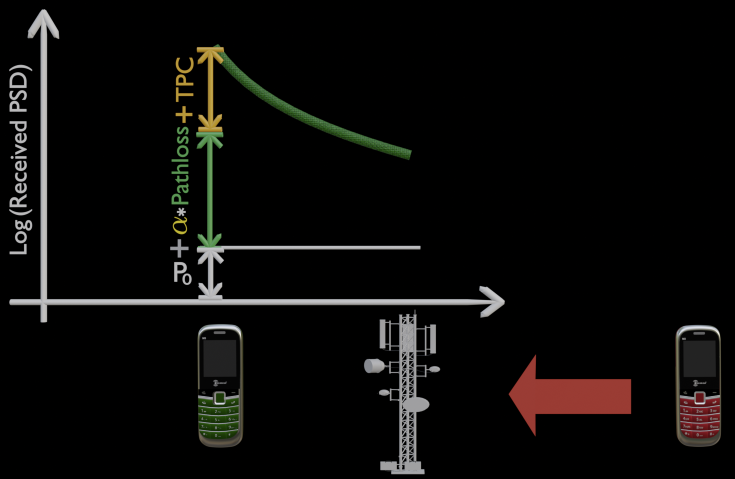
Note: In systems without TPC feedback, the method is known as Open-Loop Power Control, which relies solely on the basic calculation and alpha parameter.
3. Increasing Data Rates (Delta MCS)
Goal:
Boost data rates when conditions are favourable, by increasing the transmit power.
Solution:
The base station can signal phones to increase their transmit power using a parameter called Delta MCS. This command instructs the phone to boost its power to support higher data rates, based on principles from Shannon’s capacity equation.
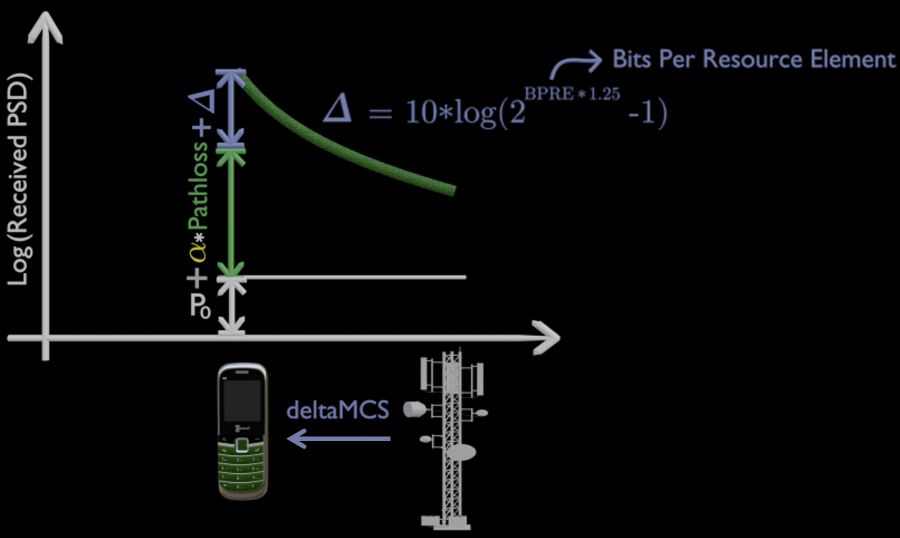
Putting It All Together: The Complete Equation
Uplink power control in 5G and 4G combines all these factors into one equation (all values are in the logarithmic domain):
Transmit Power = P₀ + (alpha × Pathloss) + Delta MCS + TPC + Bandwidth
- P₀: Target PSD.
- alpha × Pathloss: Partial pathloss compensation.
- Delta MCS: Adjustment for data rate.
- TPC: Real-time closed loop power control.
- Bandwidth: Consideration for total transmit power, instead of PSD.
Also, the transmit power is capped by the maximum power the phone can output. Hence, the below equation:
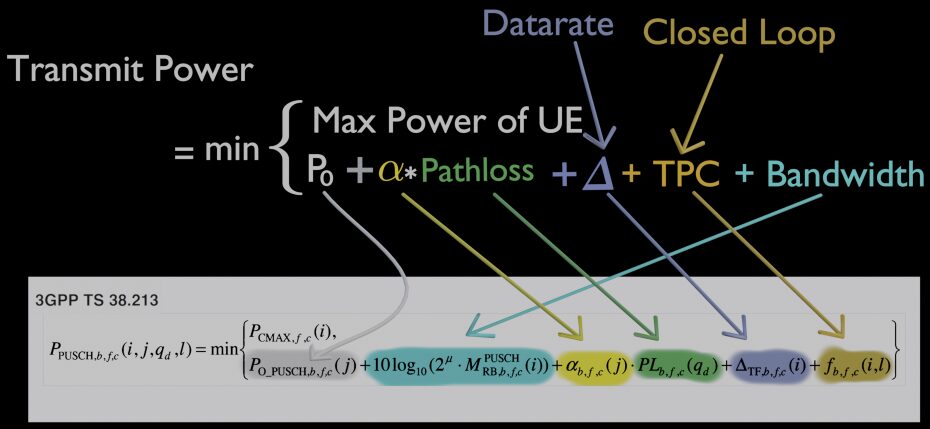
In Summary
Uplink Power Control ensures that every phone’s signal arrives at the base station at the correct signal strength. This balances the need for signal strength with battery conservation and interference management. By dynamically adjusting transmit power—through partial pathloss compensation, closed-loop feedbacks, and data rate adjustments—modern networks maintain reliable and fair communication for all users.

Leave a Reply